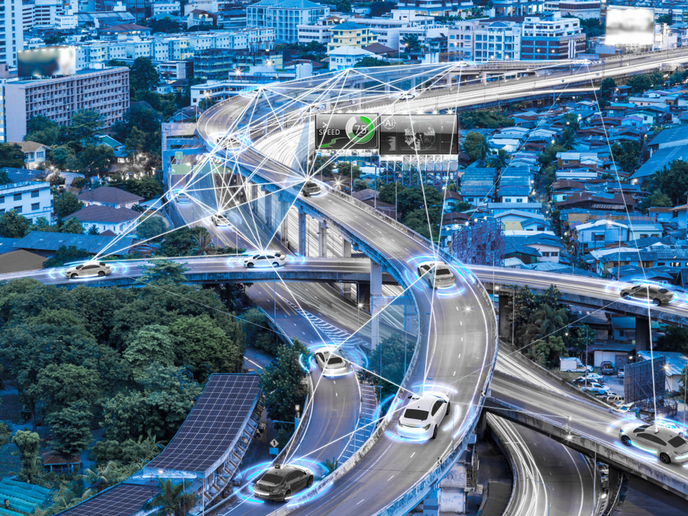Pioneering integration of connectivity advances automated driving
Connected and automated vehicles are a priority of the EC(opens in new window) and of intelligent transportation system (ITS) research. They have the potential to enhance road safety and emergency services’ effectiveness, improve traffic flow, reduce emissions and protect vulnerable road users such as pedestrians and cyclists. Enabling road vehicle automation requires addressing ICT challenges related to connectivity, data management, cybersecurity and ICT infrastructure architectures. The EU-funded ICT4CART(opens in new window) project brought together 21 partners from 9 EU countries to address the gaps and enable the transition towards higher levels of automation.
Cooperative intelligent transportation systems are on the horizon
Autonomous vehicles are still experimental, and connected vehicles are far from common. However, a wealth of data sources is available to support deployment, including traffic monitoring and road infrastructure management platforms, car navigation systems, drivers’ mobile phones and roadway cameras and sensors. The ICT4CART architecture ensured that autonomous vehicles will contribute to and extract information from all this data in an intelligent, interoperable and secure way. The project focused on the reliability, availability and redundancy of communication technologies including 4G/5G and European Telecommunications Standards Institute (ETSI) ITS-G5, a modified version of the general Wi-Fi standard optimised for secure ad hoc vehicle-to-vehicle and vehicle-to-infrastructure communication. “ICT4CART’s flexible network architecture and hybrid communication solutions are based on network slicing(opens in new window), which allows for the specialisation and isolation of different types of applications with different performance requirements,” explains Angelos Amditis, Director of the I-SENSE Group(opens in new window) of the Institute of Communication and Computer Systems (ICCS) of the National Technical University of Athens, Research and Development Director of ICCS and ICT4CART coordinator. ICT4CART’s cooperative-ITS messages are unaware of, and thus flexible about, the communication technology used, easing the inclusion of new technologies such as 5G and/or multi-access edge computing in the hybrid communication mix. “These solutions are supported by a distributed, interoperable and cloud-based data management IT environment to facilitate seamless and efficient exchange of data, enable real-time analytics and protect data privacy,” adds Amditis. The IT environment enables third-party providers such as IT and app developers to offer innovative commercial services, creating new business opportunities in the ecosystem.
Real-world connected and automated driving use cases
The project built on four use cases in real-world conditions in Austria, Germany, Italy and across the Italian-Austrian border. The team focused on how communications are handed over between networks when a car crosses a national border and how to ensure that cars continue to communicate when signals might be obstructed, such as in dense urban traffic or tunnels. They also investigated how to boost the situational awareness of autonomous vehicles in critical situations such as urban intersection crossing and highway lane merging. “Moreover, the project enabled dynamic adaptation of vehicle automation level based on infrastructure information for (more efficient) automated driving in complex urban scenarios,” adds Amditis.
Moving into high gear
The 5G-IANA project and the newly funded PoDIUM project build heavily on ICT4CART outcomes. In addition to partners’ exploitable results, ICT4CART technologies at the cross-border and Austrian sites moved from development to deployment, and the highway solutions co-tested with C-Roads Italy will remain after the project’s end. Clearly, the evolution of automated and connected mobility has taken a leap forward thanks to ICT4CART’s pioneering integration of connectivity in automated driving.







